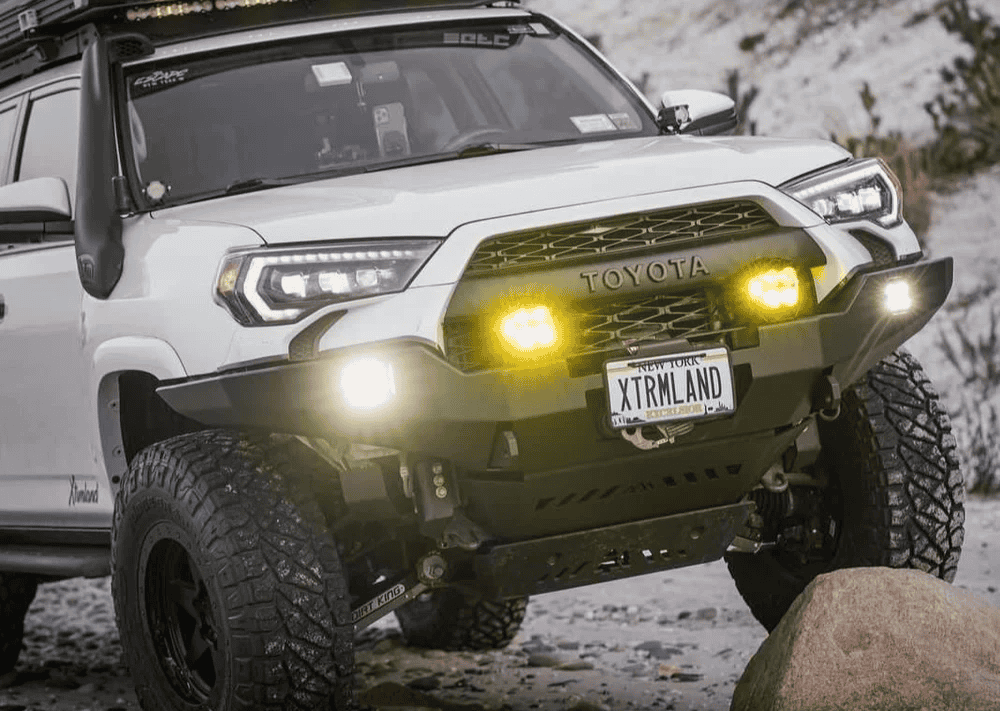Overland Vehicles

Choosing between a van and a truck starts with where you plan to drive and the weight you will carry. Trucks typically offer higher payload ratings, stronger frames, and better approach and departure angles. Many include low range gearing and factory lockers that help on steep climbs, loose rock, or deep ruts. Vans trade some raw breakover clearance for a longer wheelbase and a protected shell that keeps gear clean and dry. Modern all wheel drive vans narrow the traction gap substantially on forest roads and light technical sections.
Trucks dominate when you haul heavy water, fuel, recovery gear, and a full camp kitchen. Half ton and three quarter ton platforms handle tongue weight for small trailers and retain cooling capacity in hot climates. Vans carry bulky items inside without exposing them to dust and rain, though payload ratings vary widely by chassis. Fuel range depends on tank size and gearing; trucks often allow auxiliary tanks more easily, while vans gain efficiency from smoother aerodynamics on highway miles.
Vans feel like a moving studio apartment, with room for a fixed bed, galley, and storage that stays set up day after day. That continuity matters on long trips where constant setup and breakdown drains energy. Insulation and a sealed cabin tame road noise and temperature swings, turning bad weather into a quiet afternoon with a book. Trucks pair well with toppers, canopies, or campers that keep the bed dry while retaining exterior access. The split between cab and bed can improve safety and organization, especially with dirty or wet gear stored in the back.
Vans enable inside sleeping arrangements that are fast and discreet in towns or trailheads. Vertical walls make it easier to mount cabinets, power systems, and ventilation. Trucks allow flexible bed layouts with drawers and slide systems, and rooftop tents create excellent airflow above bugs and mud. In harsh wind and rain, a van’s walk through layout shines, while a truck’s separate sleeping solution often delivers better views and airflow in fair conditions.
Initial purchase price spans a wide range for both platforms, but build paths differ. A van concentrates spend inside the shell on electrical, thermal management, and cabinetry. A truck channels budget into suspension, armor, canopy systems, and bed organization. Both can accept solar, onboard air, lighting, and communications. Insurance and registration vary by region and configuration, while maintenance depends on engine type, service access, and parts availability on the road.
Serviceability favors trucks in remote towns where parts and technicians are familiar with common pickup platforms. Vans with popular drivetrains still enjoy broad support, but interior systems add complexity that benefits from thoughtful design. Insurance on trucks is usually straightforward; vans with extensive interiors may require stated value coverage to protect the investment. Resale favors clean, well documented builds on proven platforms with tasteful upgrades and maintenance records.
As you weigh tradeoffs, consider your daily rhythm on the road. Do you prefer a warm cabin where you can cook, work, and sleep without stepping outside, or do you love an open bed system that keeps camp chores outdoors and fast to access. Terrain matters too. Tight switchbacks, washed out spurs, and steep steps reward short wheelbases and clearance, while long gravel stretches and mixed weather reward the van’s calm interior and stable highway manners. The most rewarding setup is the one that keeps you moving without friction, mile after mile.
If you decide the enclosed layout fits your routes, a purpose built adventure van can feel like a quiet trail cabin on wheels. If your trips skew toward heavy cargo, bikes and moto hauling, or rocky climbs, a truck with a well designed canopy and storage system may be the more capable canvas. Either way, prioritize recovery points, tires suited to your soil types, and a power system that supports your real loads rather than theoretical averages. Plan for water storage, ventilation, shade, and a sleep system that encourages rest on the longest days.
When you are ready to turn decisions into a real build, reviewing example packages and proven layouts saves time. Explore Overland rigs to see core platforms and upgrade paths that match different travel styles. If you already own a vehicle and want it mapped to your use case, look into a tailored package at Custom overland upfit. For background on how our team approaches design, materials, and handoff, visit Why choose OZK.
Tell us about your routes, the gear you carry, and how you like to camp. We will recommend a platform and the right blend of suspension, power, storage, climate control, and lighting so your rig feels effortless from grocery runs to high country passes. Based in Fayetteville Arkansas, we build for real travel, test locally, and hand off with a clear walkthrough so you roll out ready.
You know what you need from the trail and from your cabin. Let our team translate that into a dialed build that fits your routes, crew, and gear. Share a few details about your trip style and timeline, and we will spec the right platform and upgrades to get you rolling with confidence.
ADDRESS:
6159 E Huntsville Rd, Fayetteville, AR 72701
PHONE:
(479) 326-9200
EMAIL:
info@ozkvans.com